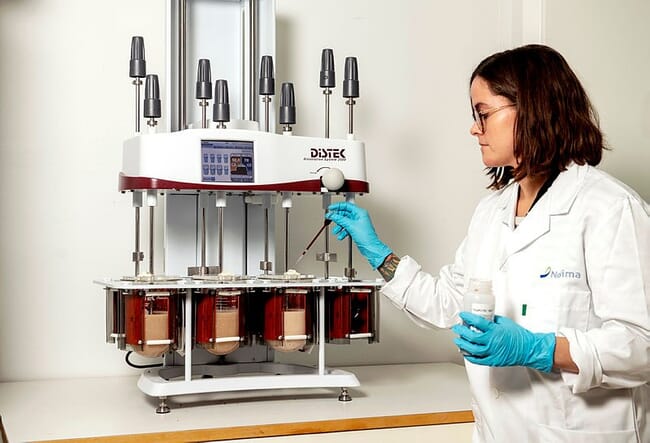
© Helge Skodvin, Nofima.
Large volumes of offcuts are created from fish fillet production. Some of this residual raw material is further processed into feed products, but significant amounts go to waste. This is not compatible with a circular bioeconomy, where all constituents of food resources should be utilised in the best possible manner.
A greater proportion of the raw material should therefore be used for human consumption. To increase this proportion, Silje Steinsholm, a doctoral researcher at Nofima, has used enzymatic protein hydrolysis to assess how this can be done.
Useful findings for the industry
In the project, Steinsholm evaluated the importance of enzymes, residual raw material and membrane filtration in relation to the end product. She used the magnetic tongue (NMR spectroscopy) to find out which chemical substances produce flavour. She connected these substances with objective measurements made by the taste judges on Nofima’s sensory panel. With the help of chemical analysis and advanced statistics, she then established a good overview of the substances that produce different flavours.
In the study - which involved offcuts of farmed salmon, cod and mackerel - Steinsholm found a link between several metabolites (different small molecules found in all living organisms) and flavours, and that it is possible to remove the very smallest metabolites by nanofiltration. The study shows that the intensity of bitterness is produced by small peptides and depends on the choice of enzyme and the degree of hydrolysis. Knowledge about the production of hydrolysates with low flavour intensity will benefit the industry in relation to protein hydrolysate production for human consumption.
NMR spectroscopy has been used in trials to define flavour in tomatoes, coffee beans and olive oil, but Nofima believes that this is probably the first study that has been conducted on protein hydrolysates. The technology is not quite there yet, but NMR spectroscopy may help simplify the interpretation of flavour in the future.
One of the scientific articles on the findings made by Steinsholm and scientists at Nofima, the University of Bergen and Roskilde University has been published in the Journal of Agricultural and Food Chemistry.
